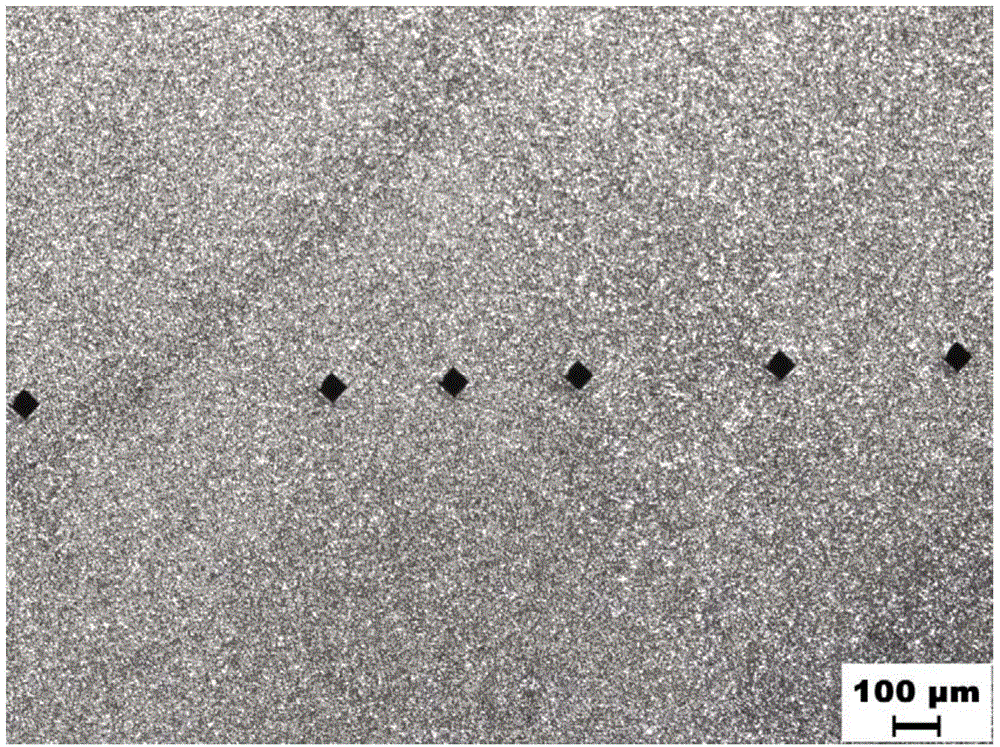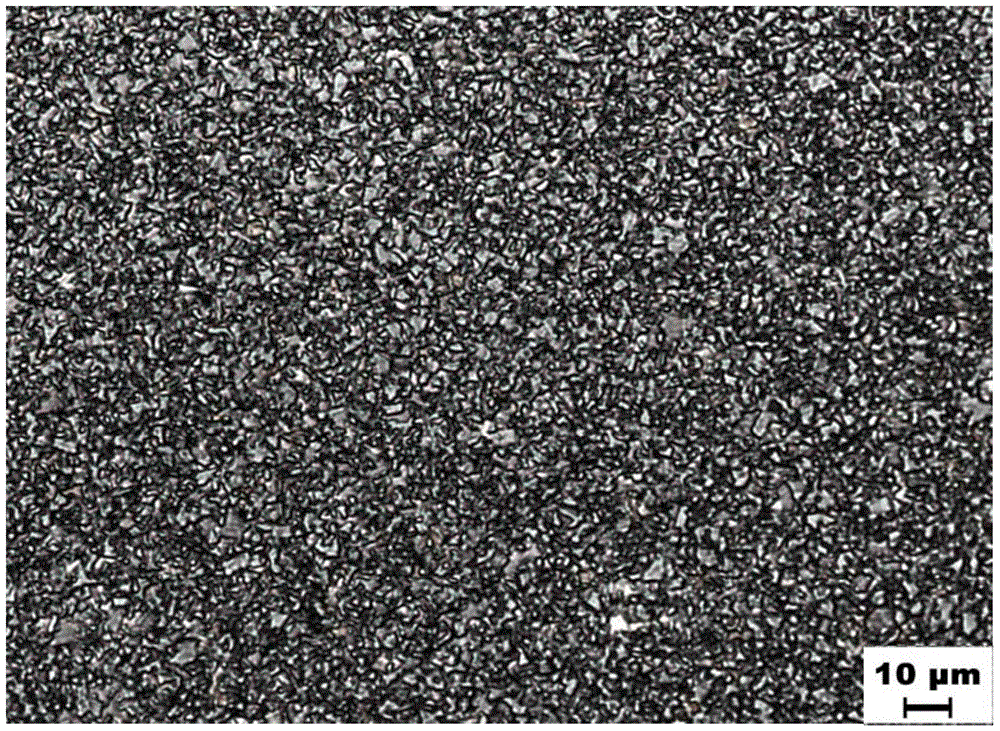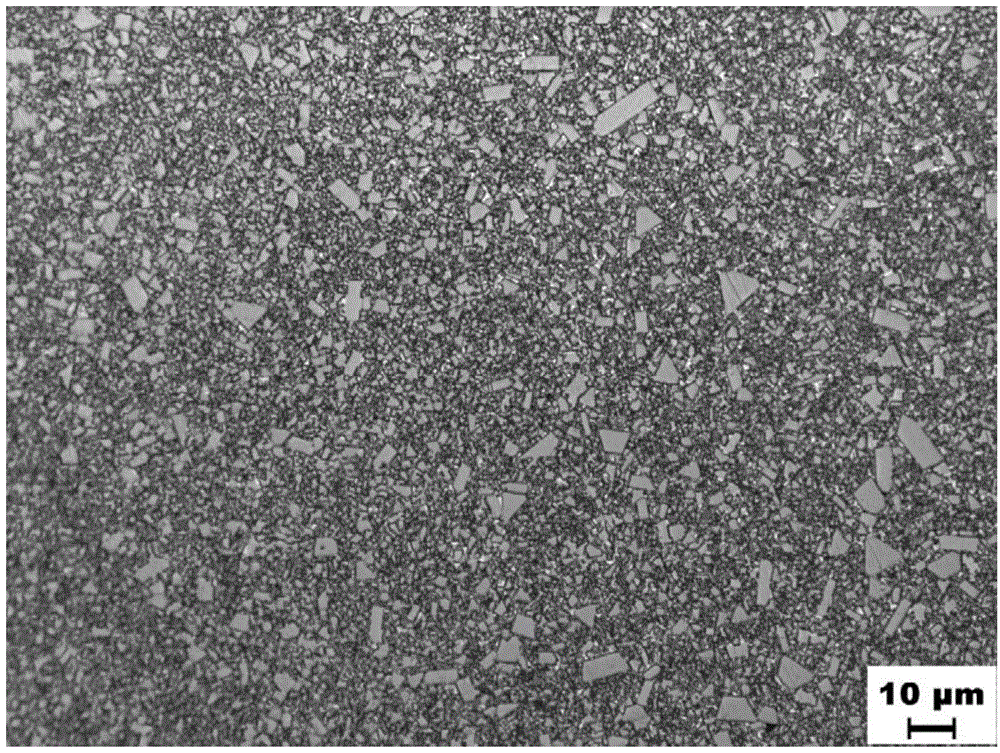Method for molding hard alloy functionally gradient materials
A technology of functionally graded materials and molding methods, applied in metal processing equipment, transportation and packaging, etc., can solve problems such as difficulty in meeting
- Summary
- Abstract
- Description
- Claims
- Application Information
AI Technical Summary
Problems solved by technology
Method used
Image
Examples
Embodiment 1
[0060] Preparation of WC-Co cemented carbide functionally graded composites
[0061] Weigh 95% WC granules and 5% Co powder to obtain the first alloy raw material; meanwhile, polyethylene, paraffin, polyethylene glycol and stearic acid are formulated to obtain additives for the surface layer mixture, the volume of which is 100%. The content ratios are: 18%, 57%, 23% and 2% respectively; then the above-mentioned additives and the first alloy raw material are mixed according to the volume ratio of 44:56 and mixed by ball milling to obtain a Fibonacci particle size of 0.5-1.2 μm. Surface mix.
[0062]Weigh WC particles with a mass percentage of 83.7% to 94.7%, 0.3% TaC particles and the remainder of Co powder to obtain the second alloy raw material; meanwhile, prepare polyethylene, paraffin wax, polyethylene glycol and stearic acid to obtain Additives for the intermediate layer mixture, the volume percentage ratios are respectively: 18-20%, 55-57%, 22-23% and 2-3%; Volume ratio...
Embodiment 2
[0089] Preparation of WC-Co cemented carbide functionally graded composites
[0090] Weigh the WC granules and 6% Co powder with a mass percentage content of 94% to obtain the first alloy raw material; simultaneously prepare polyethylene, paraffin, polyethylene glycol and stearic acid to obtain an additive for the surface layer mixture, and its volume is 100%. The content ratios are: 18%, 57%, 23% and 2% respectively; then the above-mentioned additives and the first alloy raw material are mixed according to the volume ratio of 43.5:56.5 and mixed by ball milling to obtain a Fibonacci particle size of 0.5-1.2 μm. Surface mix.
[0091] Weigh WC particles with a mass percentage of 86.2% to 92.2%, 0.3% TaC particles and the remainder of Co powder to obtain the second alloy raw material; meanwhile, prepare polyethylene, paraffin wax, polyethylene glycol and stearic acid to obtain Additives for the intermediate layer mixture, the volume percentage ratios are respectively: 18-20%, 5...
Embodiment 3
[0107] Preparation of WC-Co cemented carbide functionally graded composites
[0108] Weigh WC granule and 4% Co powder with a mass percentage content of 96% to obtain the first alloy raw material; meanwhile, polyethylene, paraffin, polyethylene glycol and stearic acid are formulated to obtain an additive for the surface layer mixture, and its volume is 100%. The content ratios are: 18%, 57%, 23% and 2% respectively; then the above-mentioned additives and the first alloy raw material are mixed according to the volume ratio of 44.5:55.5 through ball milling to obtain a Fibonacci particle size of 0.5-1.2 μm. Surface mix.
[0109] Weigh WC particles with a mass percentage of 83.7% to 94.7%, 0.3% TaC particles and the remainder of Co powder to obtain the second alloy raw material; meanwhile, prepare polyethylene, paraffin wax, polyethylene glycol and stearic acid to obtain Additives for the intermediate layer mixture, the volume percentage ratios are respectively: 18-20%, 55-57%, ...
PUM
| Property | Measurement | Unit |
|---|---|---|
| particle size | aaaaa | aaaaa |
| particle size | aaaaa | aaaaa |
| particle size | aaaaa | aaaaa |
Abstract
Description
Claims
Application Information
 Login to View More
Login to View More - R&D
- Intellectual Property
- Life Sciences
- Materials
- Tech Scout
- Unparalleled Data Quality
- Higher Quality Content
- 60% Fewer Hallucinations
Browse by: Latest US Patents, China's latest patents, Technical Efficacy Thesaurus, Application Domain, Technology Topic, Popular Technical Reports.
© 2025 PatSnap. All rights reserved.Legal|Privacy policy|Modern Slavery Act Transparency Statement|Sitemap|About US| Contact US: help@patsnap.com



